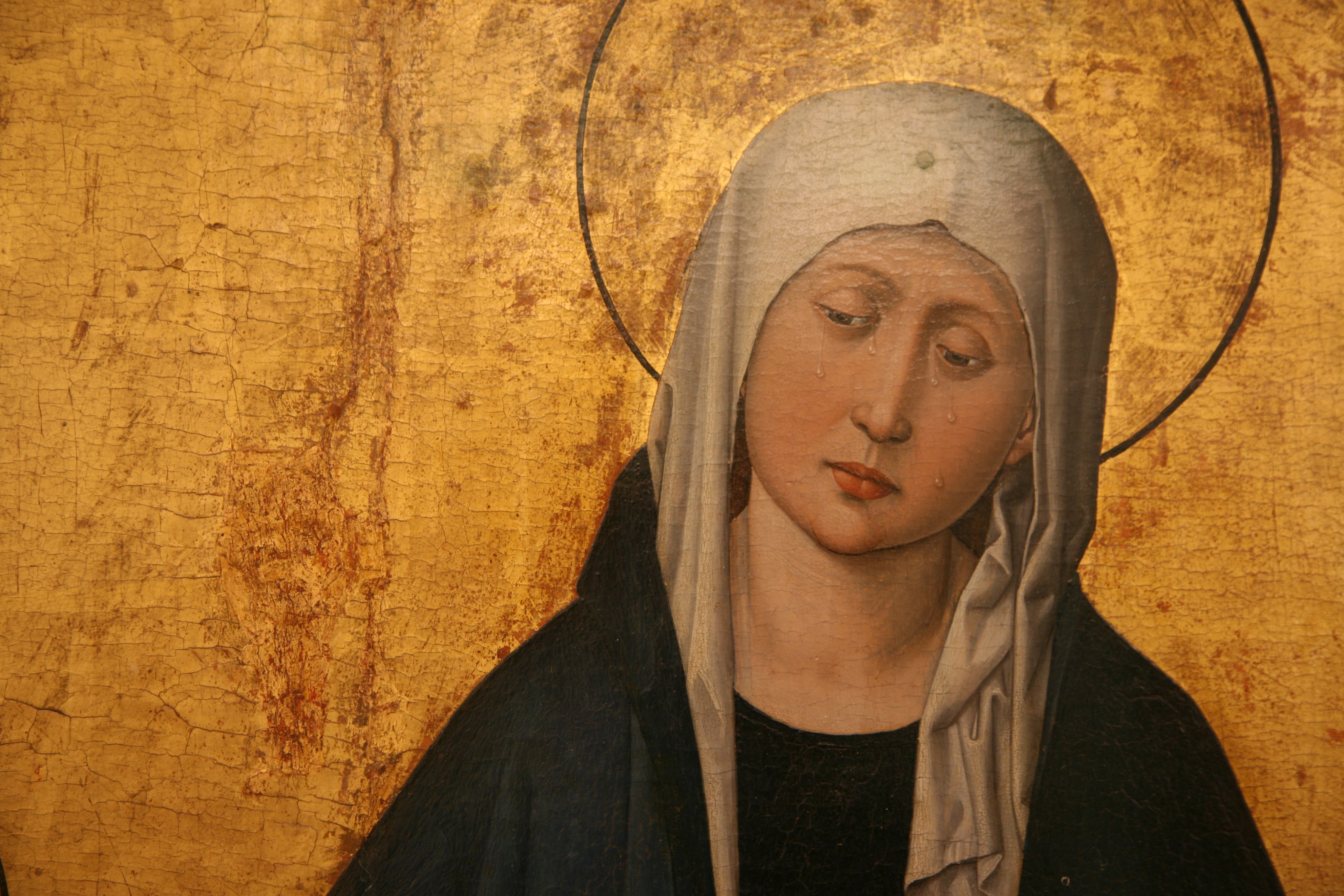
Roxane Salonen considers how our tears can be both blessings and prayers.
Recently, I interviewed someone by phone who, stopping the conversation mid-sentence to compose herself, admitted, “I’m sorry. I’m a cryer.”
Oh, how I know. Tears have always come easily to me. I have what I call a “drippy faucet,” with no plumber qualified to fix it.
But lately, I’ve been collecting stories from saints and others who have counted tears among their blessings. And I’m beginning to see that tears can be not only be gifts, but prayers. When thought of in this way, I am not so quick to discount them as valuable.
Take St. Monica, for instance. Many who know her story associate her with her tears, which were prolific because of her saddened state as her son, Augustine, grew more rebellious, and drew toward heretical spiritual ideas and reckless living. A faithful mother and wife living in the 4th Century, it was hard enough for Monica to deal with a pagan husband and mother-in-law who constantly derided her faith, but seeing her brilliant son also fall to the world’s wooing was just too much.
Famously, she brought her heartache to a bishop, pleading with him to talk to Augustine in the hopes he’d convert. But annoyed by her persistence, the bishop finally told her, “Go away. While you live, the son of these tears of yours shall not perish!” (Confessions) The bishop’s “admonition” quickly turned into consolation, and with renewed hope, Monica recommitted to her quest, but now through fewer dramatics and more prayer.
Later, Augustine would look back on his mother’s prolific tears and write about them as “rivers flowing down” from her eyes, “by which, before (God) and in my behalf, she daily watered the ground beneath her face.” (Confessions)
Not only did her tears water the ground, but they became a symbol of a mother’s love for her son, and remind us all, with Augustine’s eventual and fervent conversion — he become a bishop, doctor of the Church, and is hailed as one of the greatest saints of all time — that when we cry out to God in our sadness, our pleas do not fall on deaf ears.
Monica isn’t alone in being known for her melancholy emotions. St. Ephrem, whom we celebrated earlier this month, was said to be “a deeply sensitive man” who wept “almost constantly” (Magnificat, June 9, 2021).
Pope Francis mentioned St. Ephrem’s tears during a general audience address in Feb. 2020, referring to the second beatitude, “Blessed are those who mourn,” noting that mourning “is an attitude that became central to Christian spirituality,” and that the desert fathers referred to tears as “an inner pain that opens up to a relationship with the Lord and with one’s neighbor.” Referencing St. Ephrem in particular, he said that “a face washed with tears is unspeakably beautiful.”

Tears, Pope Francis also said, can come from “loving the other in such a way that we are bound to him or her until we share his or her pain … it is important that others make a breach in our hearts.” He remarked: “I have often spoken about the gift of tears, and how precious it is,” adding later, “Wise and blessed is he who welcomes the pain linked to love, because he will receive the consolation of the Holy Spirit.”
Though not a canonized saint, Etty Hillesum, a World War II Holocaust victim, certainly showed heroic virtue as she neared her inevitable death. In her diary, she expressed the value of tears, though in this case, ironically, not of sad ones, but happy tears, even from the concentration camp where she’d been forcibly brought.
“Sometimes when I stand in some corner of the camp, my feet planted on [y]our earth, my eyes raised toward [y]our heaven, tears…run down my face, tears of deep emotion and gratitude. At night, too, when I lie on my ‘bed’ and rest in [y]ou, oh God, tears of gratitude run down my face, and that is my prayer.” (Etty Hillesum)
Finally, we can look to the Mother of Sorrows, whose tears, as raw and real as any, dripped profusely from heavy-laden eyes as they watched the cruel and undeserved crucifixion of her gentle son, our savior.

When all these stories of tears are collected, it seems that rather than tears being a detriment, we can recognize their sublime value. When we cry, especially in suffering, we are not crybabies, but, as Pope Francis has said, “wise and blessed,” for we have “welcomed the pain linked to love.”
Who can, in these instances, call any tear a waste, when contained in each droplet is, as it were, a wordless prayer, a pleading to God for his mercy and love?
Q4U: When have you counted your tears as a gift?

Copyright 2021 Roxane Salonen
Images (from top): Canva Pro; St. Ephrem icon, CC BY-SA 1.0, via Wikimedia Commons; Unterlinden Museum, CC BY 2.0, via Wikimedia Commons; Pixabay (2019)
About the Author

Roxane Salonen
Roxane B. Salonen, Fargo, North Dakota (“You betcha!”), is a wife and mother of a literal, mostly-grown handful, an award-winning children’s author and freelance writer, and a radio host, speaker, and podcaster (“ Matters of Soul Importance”). Roxane co-authored “ What Would Monica Do?” to bring hope to those bearing an all-too-common cross. Her diocesan column, “ Sidewalk Stories,” shares insights from her prolife sidewalk ministry. Visit RoxaneSalonen.com


.png?width=1806&height=731&name=CatholicMom_hcfm_logo1_pos_871c_2728c%20(002).png)
Comments